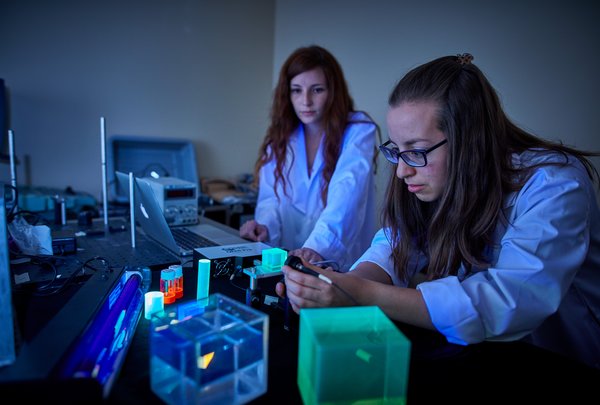Many researchers at Université Laval have decided to use their knowledge to help improve people’s health and well-being and enhance their quality of life. Some are working to improve the biocompatibility of materials used to replace or repair damaged tissues, while others are refining the bioprocesses used to grow cells and produce vaccines. One researcher is an expert in aerosols who assists workers at high risk for respiratory diseases. Other researchers with in-depth knowledge of mechanics, electricity, and physics are designing innovative tools and systems to better understand the brain, improve autonomy for people with disabilities, and advance radiotherapy.
Explore health and biomedical research
The faces of health and biomedical research
Technical assistance and rehabilitation
Researchers are using a number of approaches, including virtual reality, telerehabilitation, robotic rehabilitation, and non-invasive brain stimulation to increase autonomy for seniors, people with disabilities, and injured athletes. For example, new methods for movement rehabilitation involving robotic tools have been developed at the Rehabilitation Robotics Laboratory at the Centre for Interdisciplinary Research on Rehabilitation and Social Integration (CIRRIS). The laboratory is equipped with a robotic ankle orthosis and a split-belt treadmill, while a robotized arm and a prosthetic hand are under development.
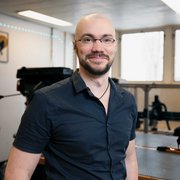
Alexandre Campeau-Lecours, professeur agrégé, Department of Mechanical Engineering
Member of the Centre for Interdisciplinary Research on Rehabilitation and Social Integration
Professor Campeau-Lecours specializes in smart robotics and Mechatronics combines mechanics, electronics, automation, and real-time computing. for technical aids. He uses robotic and mechatronic technologies and smart algorithms to help seniors and people with disabilities gain autonomy and improve their quality of life. He has developed smart algorithms that make the JACO robotic arm more efficient. The arm, which is installed on power wheelchairs, helps people with upper body mobility impairment eat, drink, and hold objects. He also developed AssystMouse software, which allows people with disabilities to control a computer cursor with head movements without having to wear a device.
Biomaterials
Biomaterials are used to make medical devices such as stents, pacemakers, catheters, prostheses, and artificial tendons. They are designed to replace or repair tissue and may be synthetic (metal alloys, polymers, or ceramics) or natural (biological tissue, cellulose, or chitin). Numerous research projects in this field aim to limit the incompatibility of biomaterials with the human body so they can do their job without negatively impacting their biological environment.
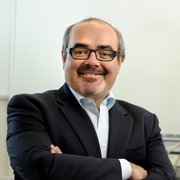
Diego Mantovani, professeur titulaire, Department of Mineral, Metallurgical, and Materials Engineering
Canada Research Chair on Biomaterials and Bioengineering for Surgical Innovation
Professor Mantovani specializes in designing lighter, smaller, and stronger intermediate products for use in organ replacement and repair. At his biomaterials and bioengineering laboratory, he focuses mainly on designing degradable materials, stripping and coating polymerized biomaterial surfaces using Plasma deposition or plasma-enhanced chemical vapor deposition is a process used to deposit thin gaseous films on a substrate. (Wikipedia), and studying the properties of materials used in designing artificial organs. He is also working on designs for 3D cell regeneration structures for tissue regeneration.
Neuroscience
Biomedical research is flourishing in the field of neuroscience. At the CERVO Brain Research Centre in Québec City, a number of researchers are studying the anatomical and functional organization of complex neural systems to understand the causes of psychiatric and neurological diseases. Other scientists at the centre are investigating the molecular aspects of neural communication, including cell signaling mechanisms, which play a role in memory, sensation, learning, and nervous system diseases. Research is also being carried out on the genetic, epidemiological, cognitive, and neuropharmacological aspects of psychiatric and neurological diseases.
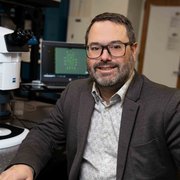
Benoît Gosselin, professeur titulaire, Department of Electrical and Computer Engineering
Member of the CERVO Brain Research Centre and the Big Data Research Centre (CRDM)
Benoit Gosselin specializes in bioelectronics and high-precision biomedical instrumentation. He develops wireless optoelectronic microsystems for neuroengineering as well as analog and mixed integrated circuits for brain-machine interfaces. One of his current research projects involves designing a self-charging wireless optoelectric interface for studying the brains of small animals. This ambitious project will develop a tool for finding new treatments for stroke and brain diseases such as epilepsy through real-time observation of brain microcircuits in small animals.
The system I created incorporates optogenetic simulation and electrophysiology. Light pulses can be used to target specific types of cells in order to study the effects of a drug or better understand how the brain is wired. It is unique and pain-free. We are ahead of everyone else in this area.
Gabriel Gagnon-Turcotte, PhD student in electrical engineering supervised by Professor Benoît Gosselin, on the groundbreaking optogenetic system he designed during his master’s degree
Graduate studies
Make the leap to graduate studies
Explore our programs of study based on your interests
Air quality
Most scientific work on air quality involves developing and validating tools, methods, and techniques for sampling, characterization, and analysis in order to detect and measure chemical contaminants in the atmosphere. These measurements are used to establish air quality standards for workplaces and cities to safeguard worker and population health.
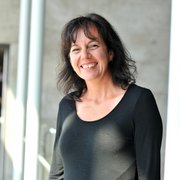
Caroline Duchaine, professeure titulaire, Department of Biochemistry, Microbiology, and Bio-informatics
Member of the Respiratory Health Research Group and the Québec Heart and Lung Institute Research Centre – Université Laval
Caroline Duchaine is a pioneer in aerovirology, the study of transmission mechanisms for airborne viruses. She develops methods for detecting airborne respiratory pathogens using molecular biology at her IUCPQ-UL laboratory. Professor Duchaine and her team are interested in air quality and respiratory health among high-risk workers, including hospital and agriculture (pig and dairy farm) workers. Professor Duchaine has also developed a sampling method to characterize human exposure to mycobacteria, which cause serious respiratory infections and diseases in metal cutting plants.
Biomedical technology
Many UL researchers are actively working to create and improve biomedical technologies. For example, biophotonics researchers are developing promising tools to refine medical imaging and diagnosis, and even therapeutic interventions. Others are leveraging their creativity to develop technologies for mobile care and wireless health devices. This new technology sector also includes biosensors, which can facilitate early detection of disease markers.
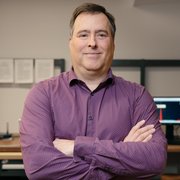
Luc Beaulieu, professeur titulaire, Department of Physics, Engineering Physics and Optics
Director of the Cancer Research Centre and NSERC-Elekta Industrial Research Chair in Biomedical Technology for Brachytherapy
Professor Beaulieu specializes in medical physics and more specifically in medical procedures that use ionizing radiation, such as radiotherapy and diagnostic and interventional radiology. His research aims to increase accuracy in measuring and calculating radiation doses and treatment delivery. One of the most important parts of his research involves designing Dosimeters are instruments used to measure exposure to ionizing radiation. that use optical technologies. Professor Beaulieu is using his chair to focus on new therapeutic approaches in brachytherapy, a form of radiotherapy that protects healthy tissue better than external radiotherapy.
Cell therapy and regenerative medicine
Cell therapy involves treating an organ or organism using cells obtained primarily from stem cells. It is now possible to repair tissues, detect malignant cells, and even cure diseases using the natural power of immune cells. The goal of regenerative medicine is to improve our understanding of various diseases and develop new solutions for healing wounds and regenerating organs. It also opens the door to the production of reconstructed 3D tissue through tissue engineering.
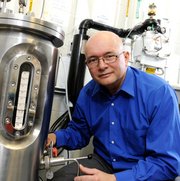
Alain Garnier, professeur titulaire, Department of Chemical Engineering
Member of PROTEO
Professor Garnier is interested in bioprocess design, development, and optimization. As a specialist in the production of recombinant proteins, vaccines, and therapeutic cells, he collaborates with medical researchers in a number of areas, including the use of stem cell culture to treat Duchenne muscular dystrophy. Other collaborations include work on producing human blood platelets and recombinant Retroviral vectors make it possible to permanently transfer genetic materials to cells in culture or within organized tissue using recombinant genomes. and perform proteomic analysis on cell cultures. Alain Garnier is part of Professor Gary Kobinger’s team in the Faculty of Medicine, which received $4 million to manufacture a promising HIV vaccine.
We suspected that airborne gastroenteritis viruses existed, but we were the first to measure them. We are the only team in the world with the equipment to do so. We have a bioaerosol research team and our equipment is state of the art.
Caroline Duchaine, professor, Department of Biochemistry, Microbiology, and Bioinformatics
